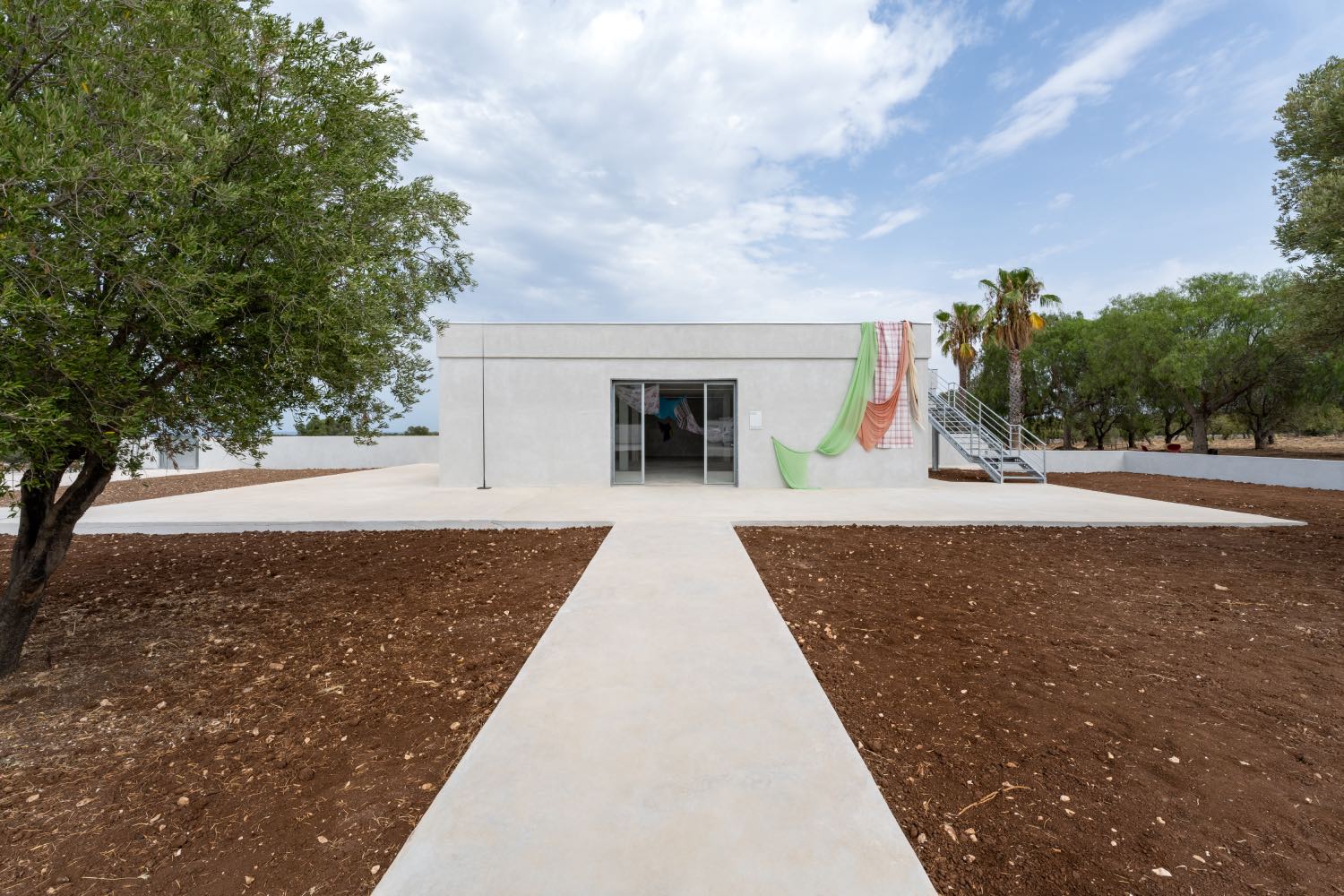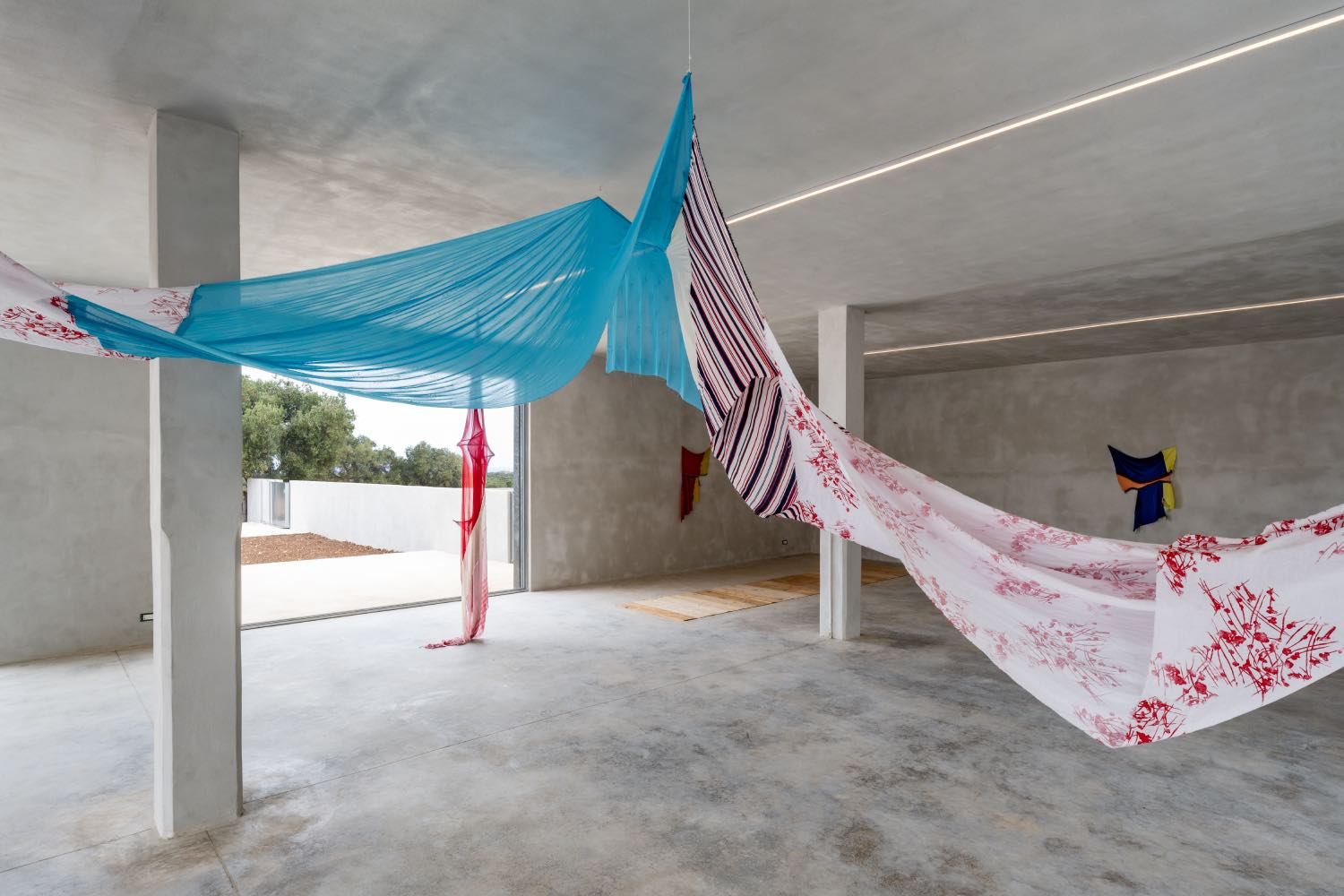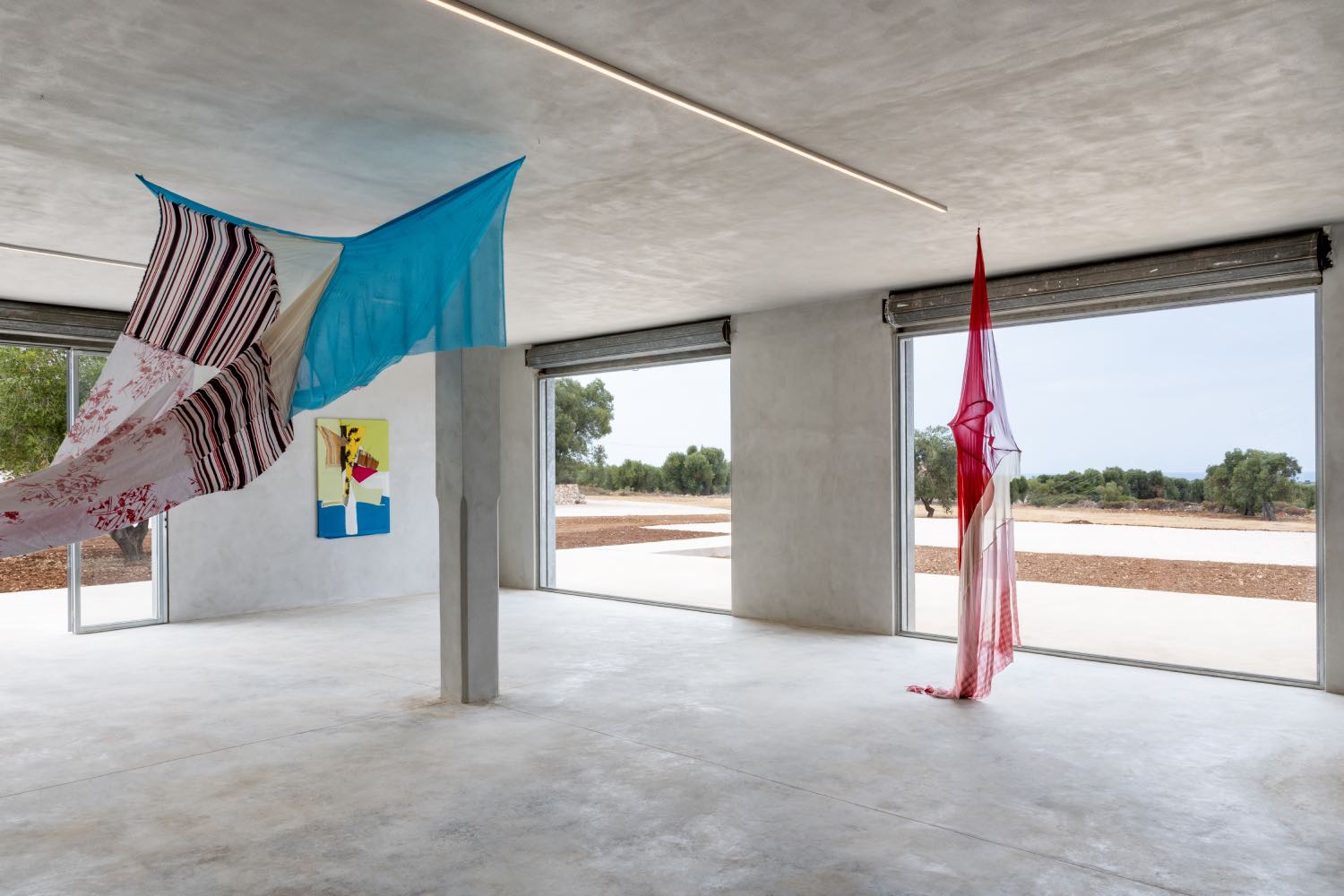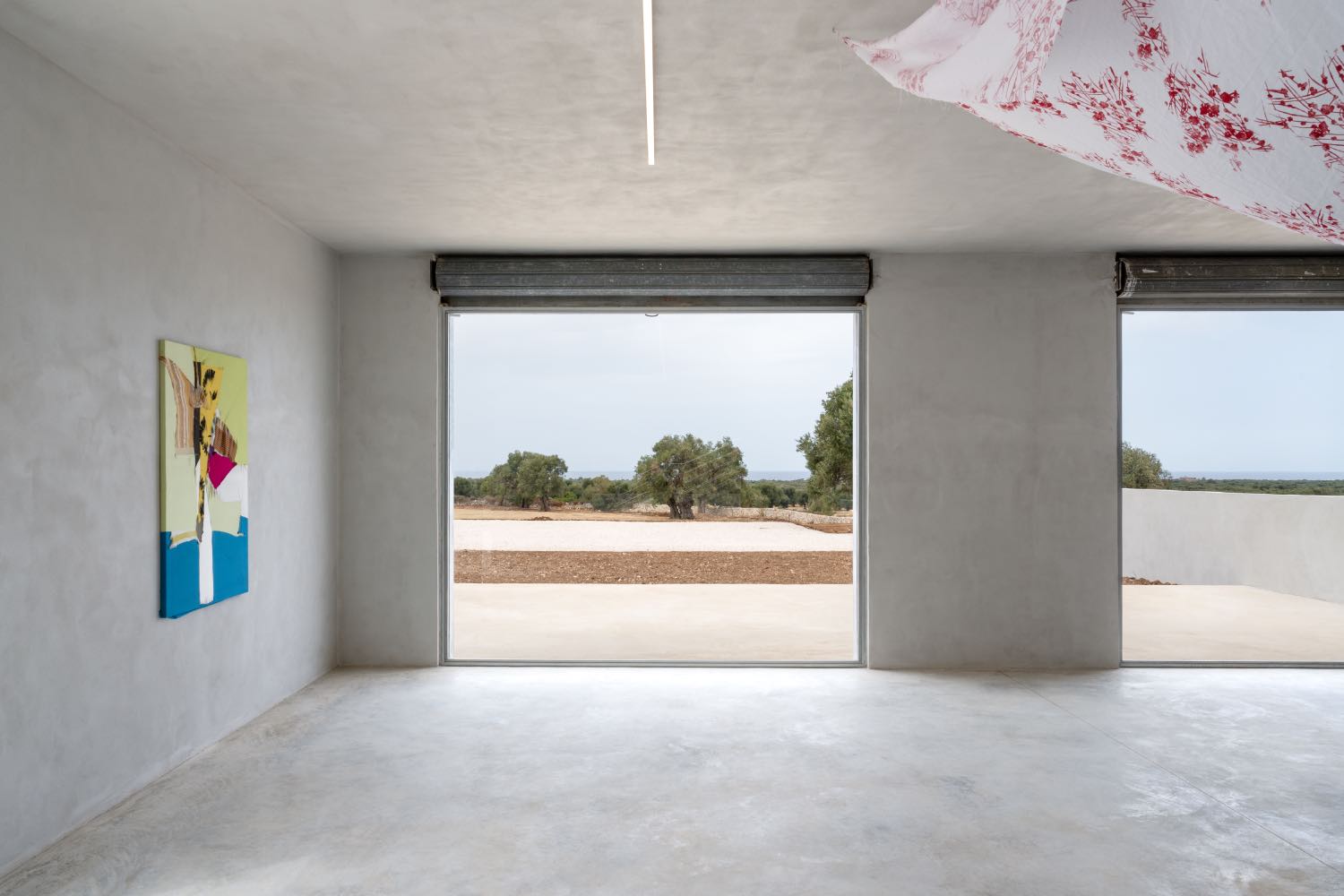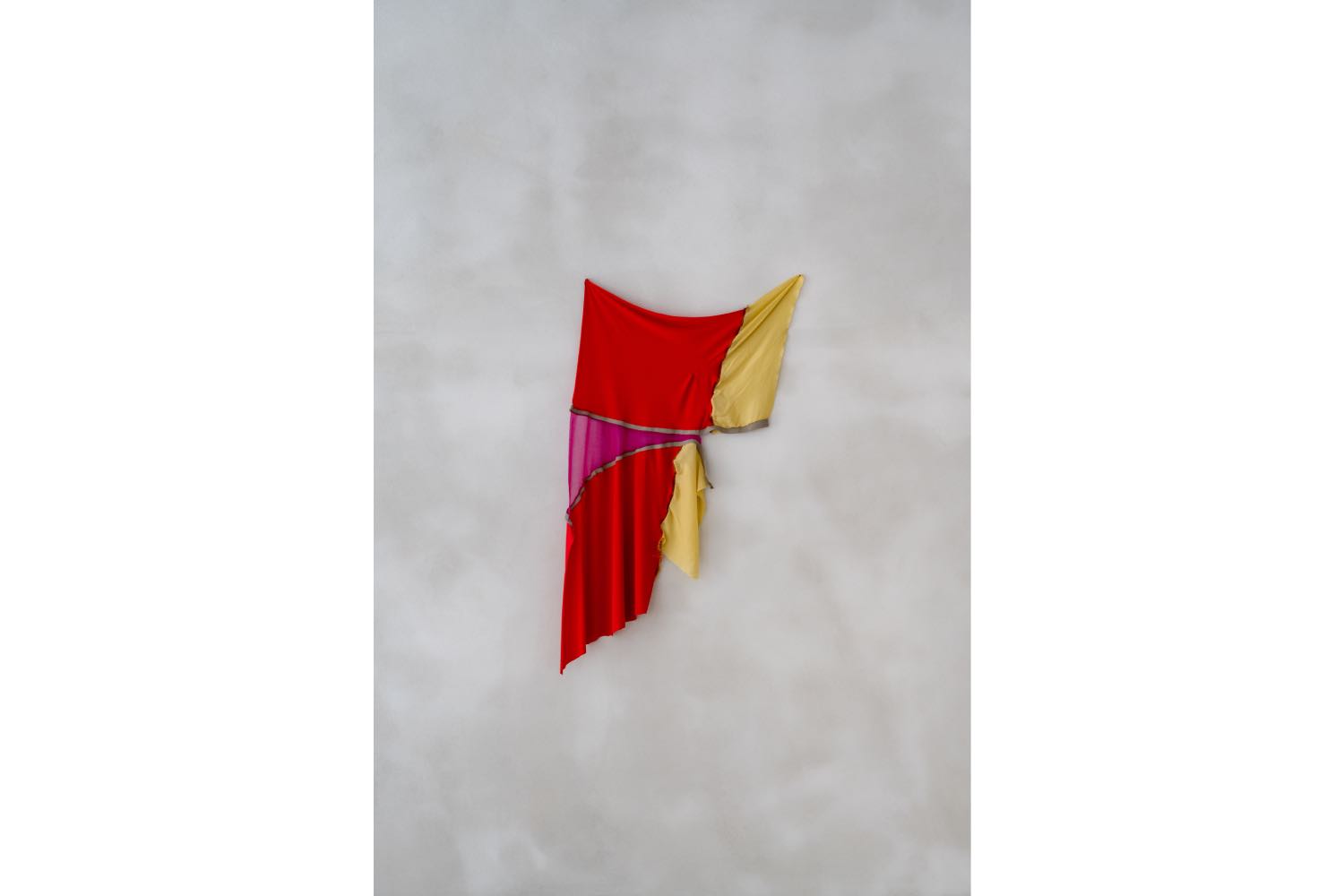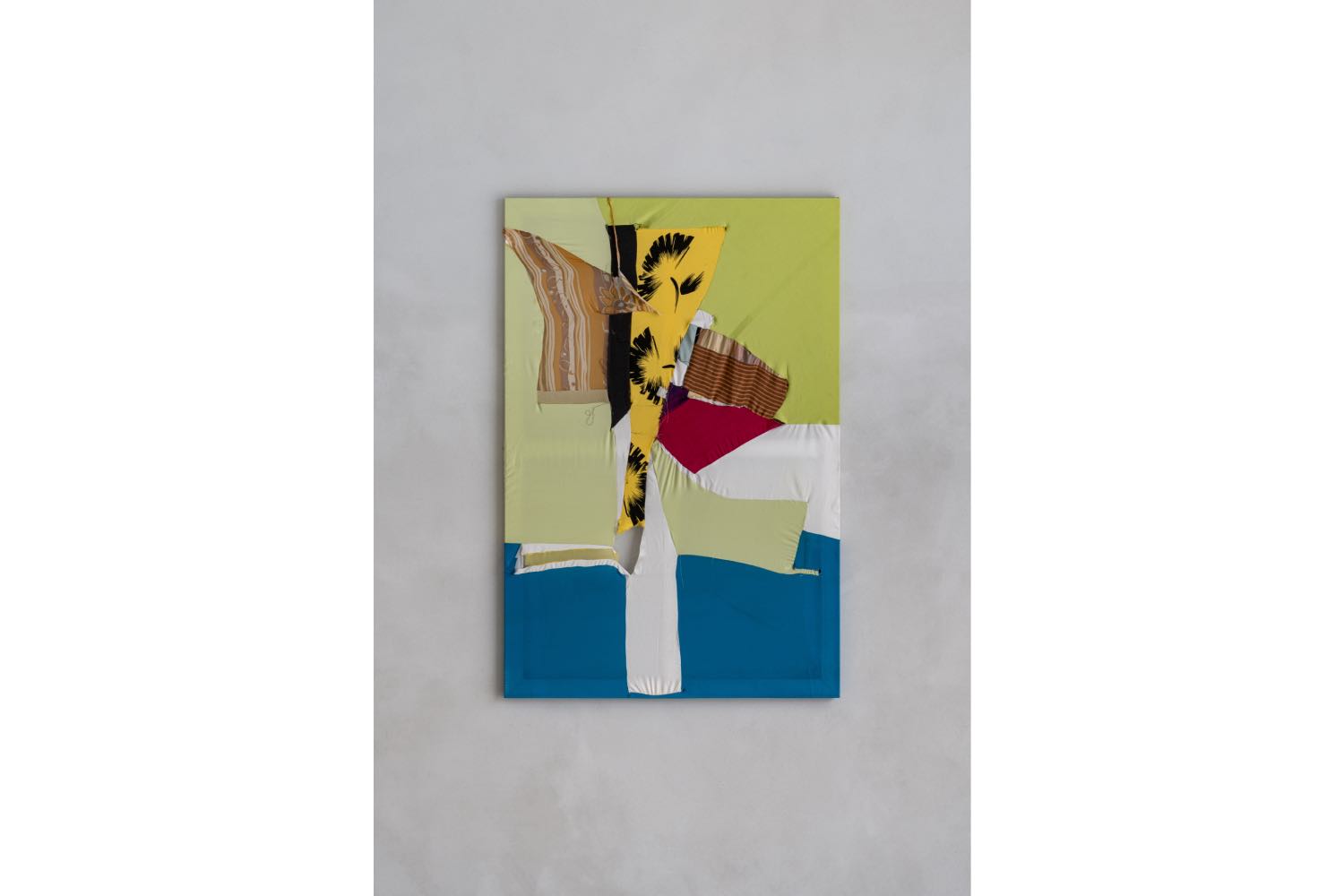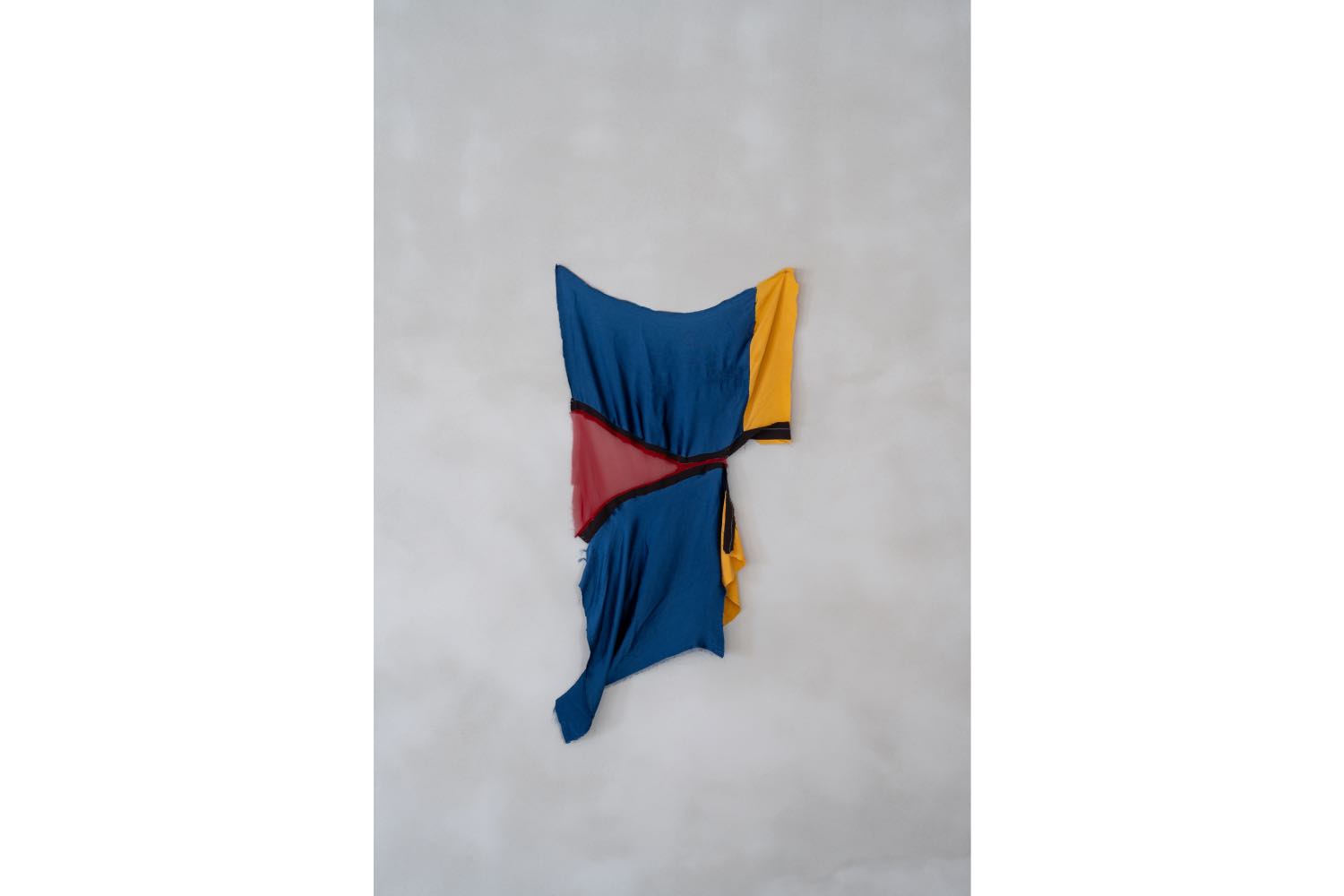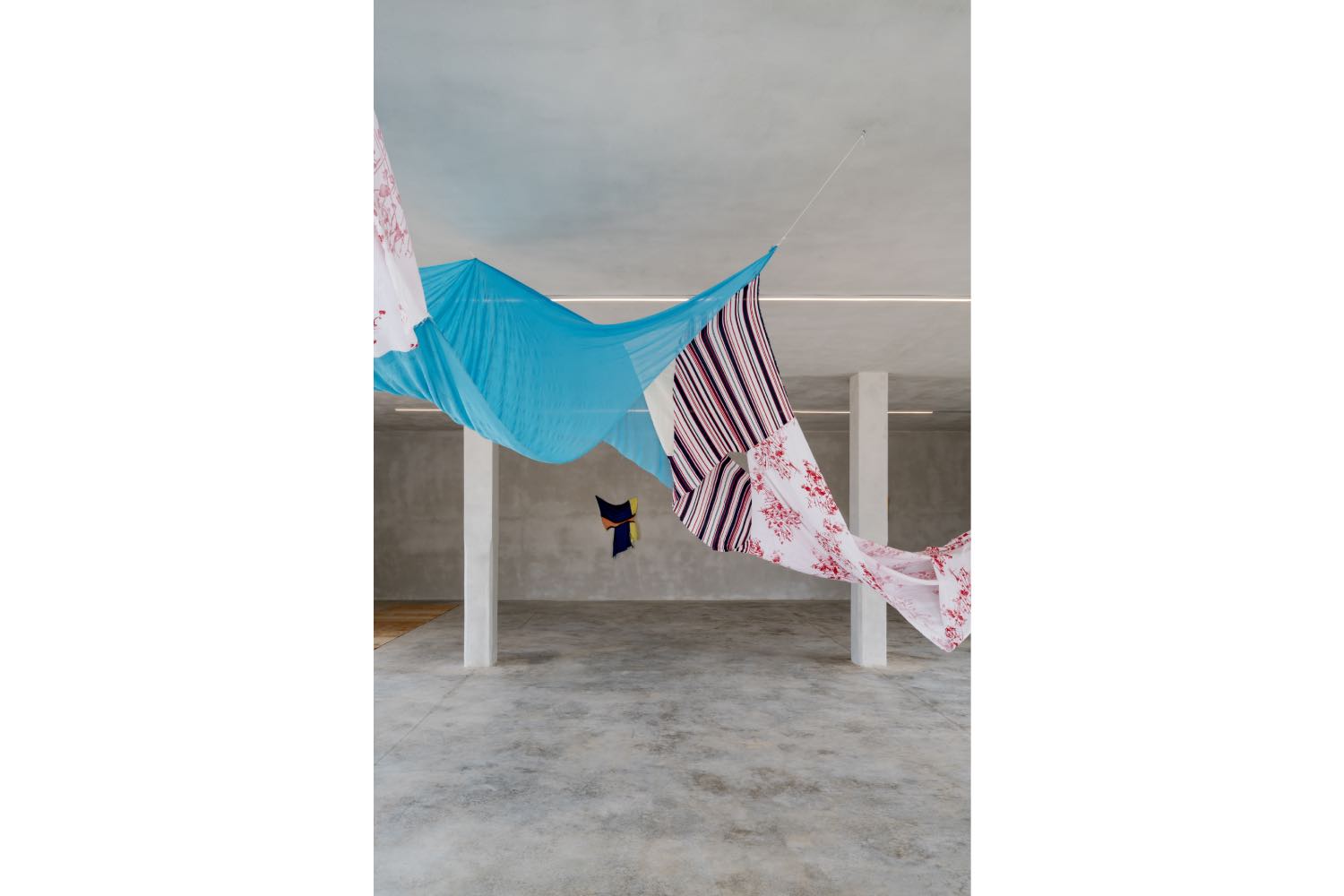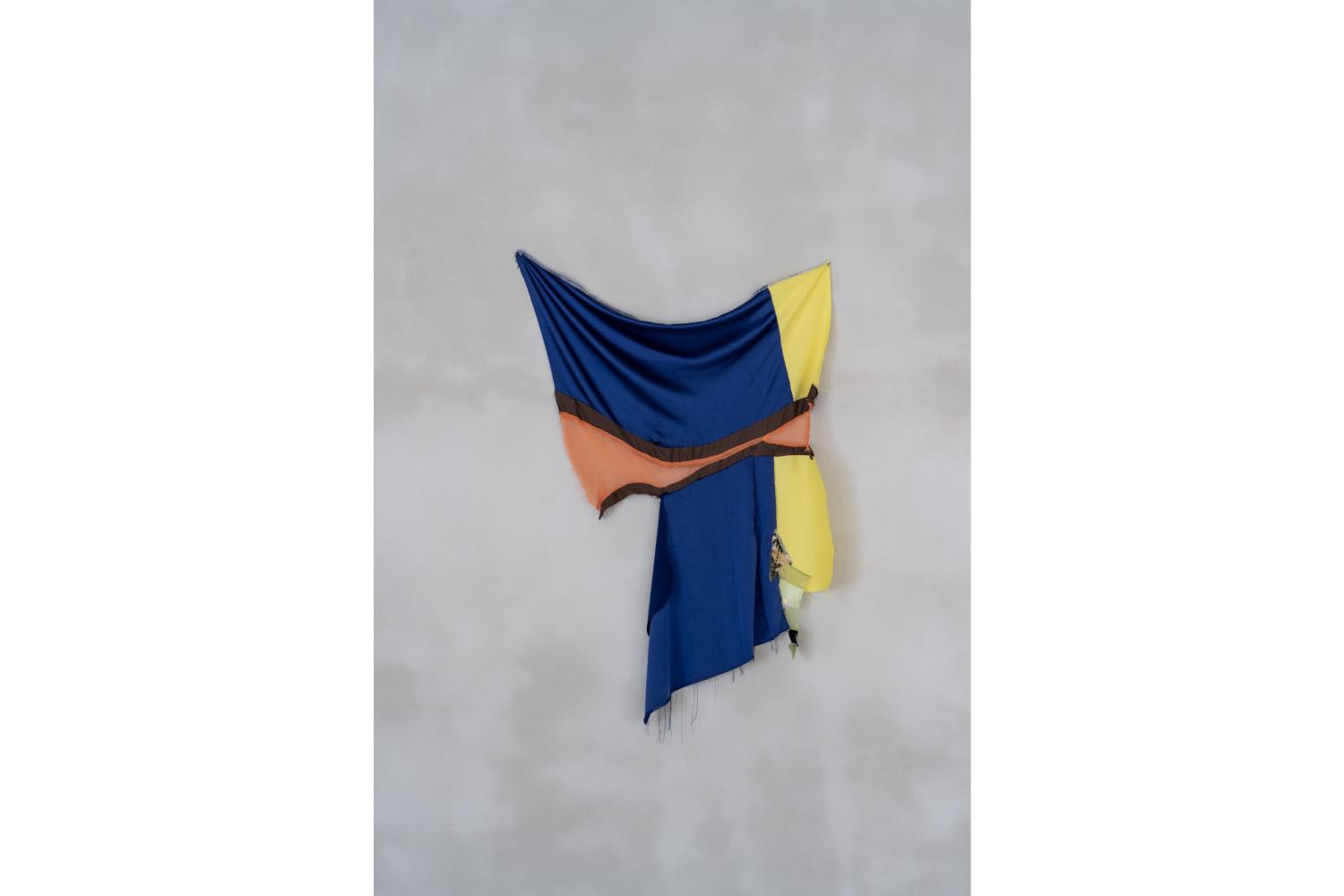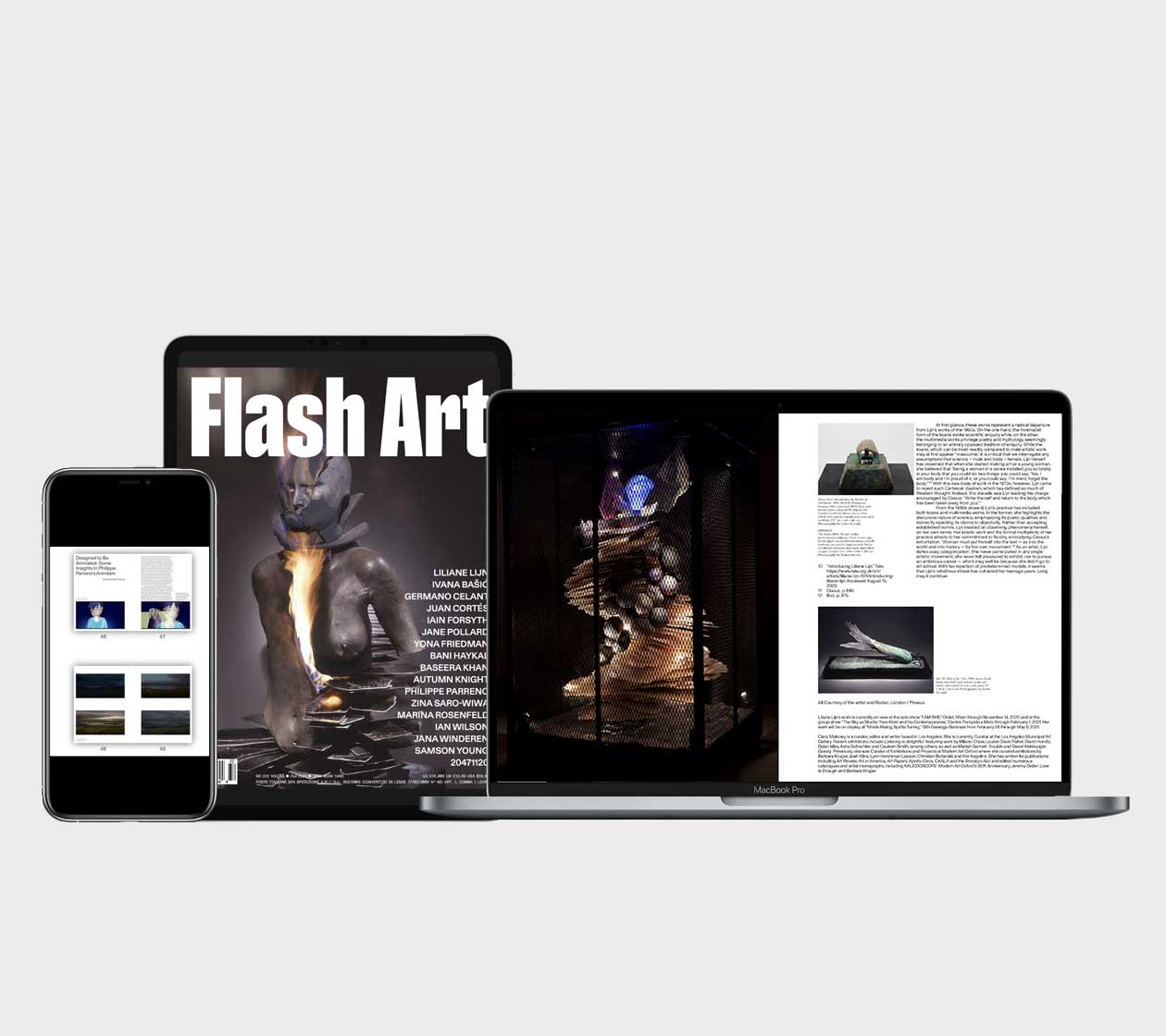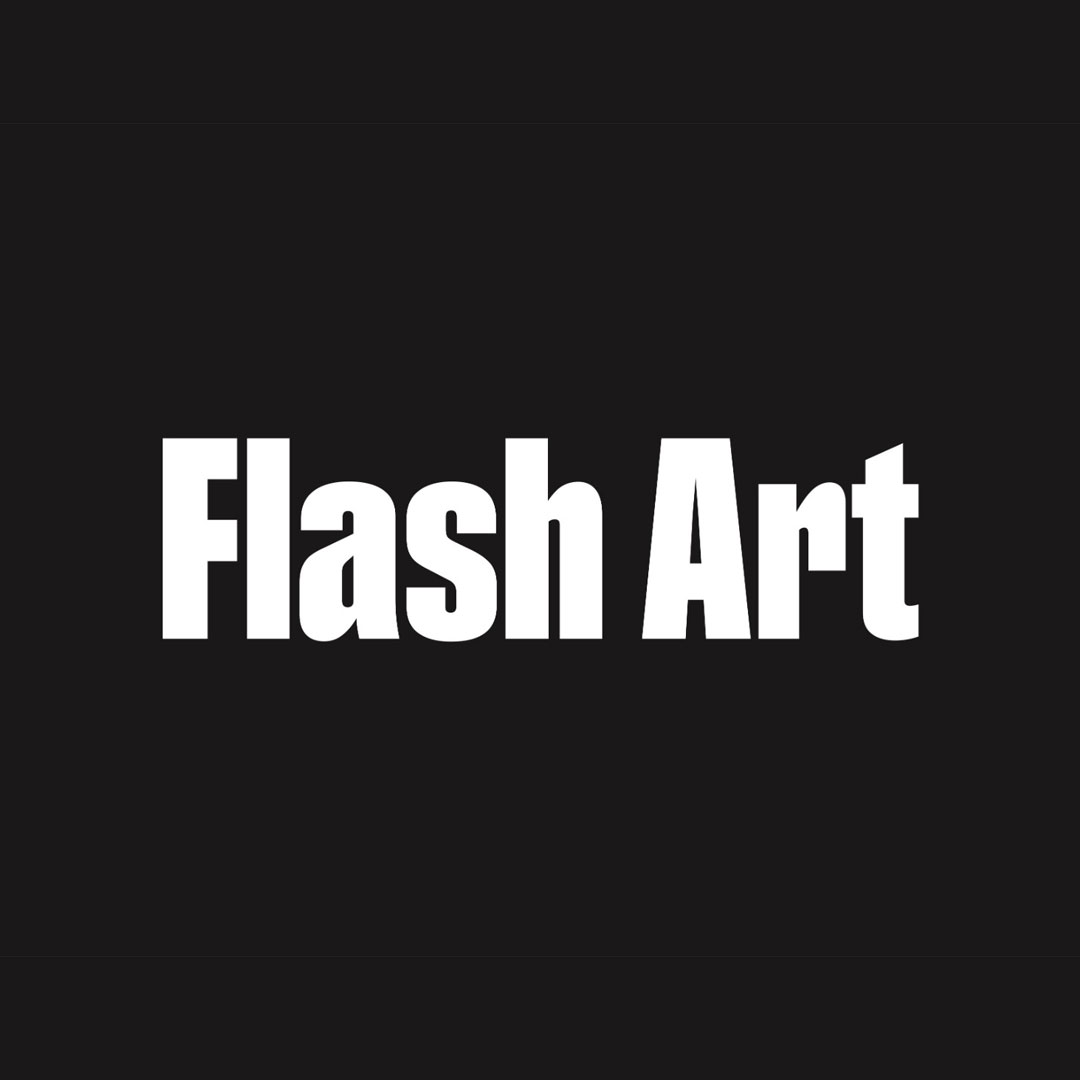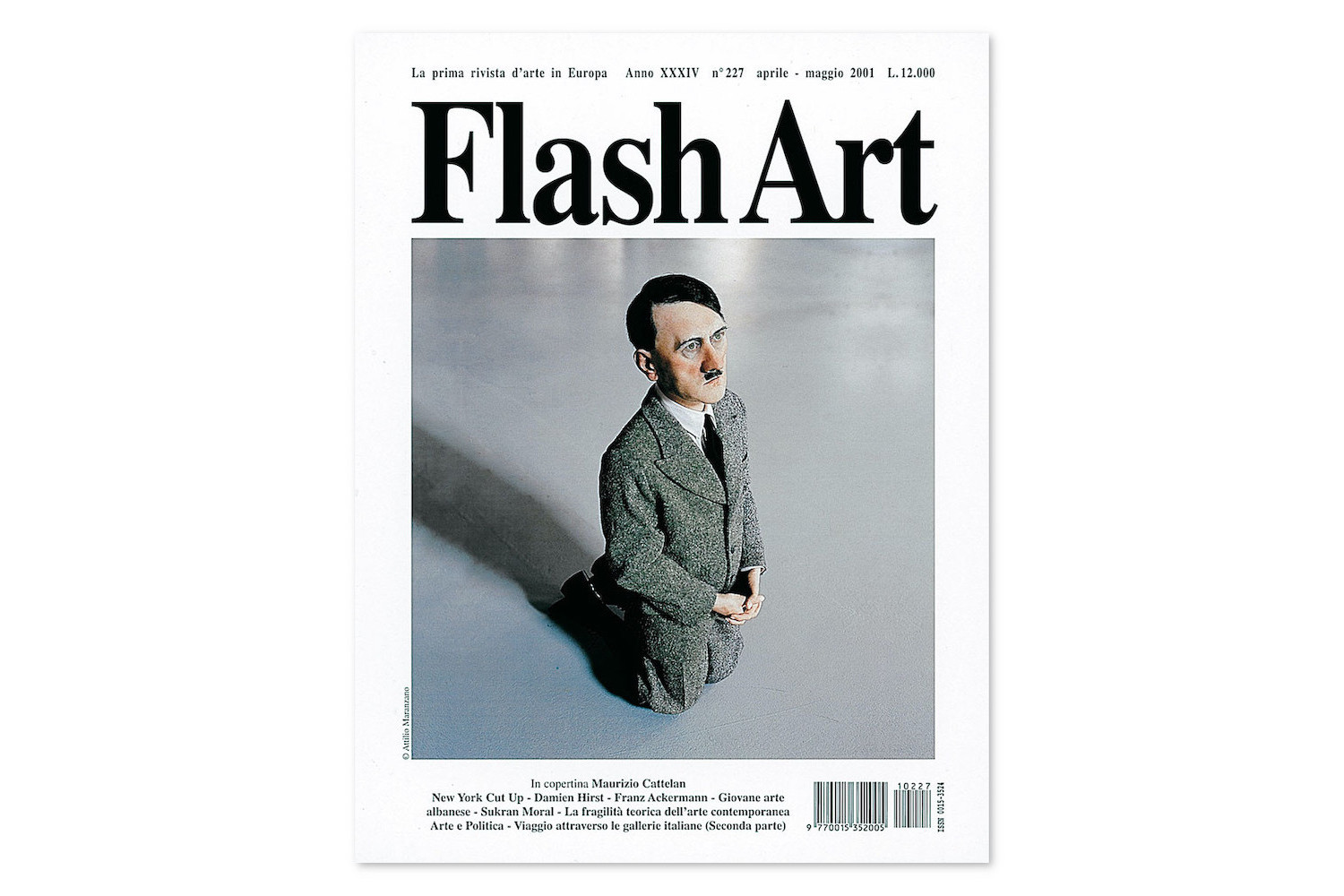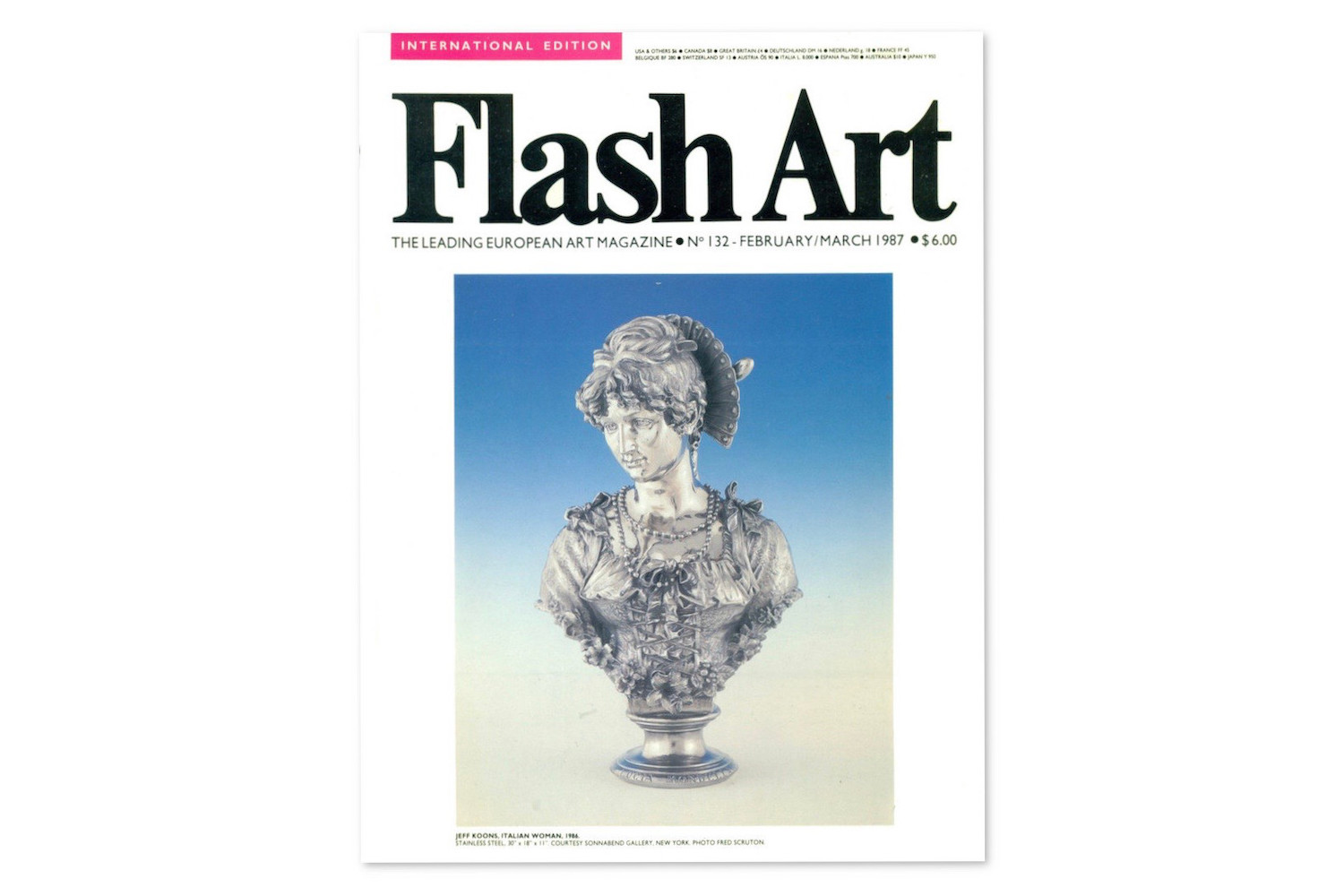Gea Politi: The idea for “No Doubt” was born both as a show and a residency, but also a statement because of the completely different setup. You’ve done something similar in Marfa, even if it was within an institution context. Nature wise, the setup might’ve been similar, but it was quite different.
Eric N Mack: I had a lot of opportunities to work in these kinds of setups, where I could show my work, but there are also opportunities to use the space as studio, and just understanding the space through the exploration of materials.
GP: You have a studio, but this way of working, inside and within the space, is a strong part of your practice. That’s also why you need days ahead to process and meditate, you have a sort of pre-residency approach to every show.
ENM: I mean more recently, definitely. I thought a lot about Italy as well, and what the context provides, and language of textile, the ubiquity of it.
GP: Preparing a show with a sewing machine and in a very specific context (Italy, in this case) is almost part of every space you’ve engaged with. Do you always use the same approach? Did it ever happen to prepare everything way ahead the installment of a show?
ENM: There’s always something that I bring with me. It’s kind of a continuum, to blend the new with the old. But this specific context had so many opportunities, and I think it had to do with the history of textiles, as well as the history of a really specific kind of abstraction as well. I’m thinking about Fontana, Manzoni, and all those artists that were able to focus on the minimal in context, but also on a certain expression, and material and surface, pushing the boundaries of the painting practice.
GP: Those boundaries are really stretched and pulled through your work because of the volumes and the shape they take according to the space. Some of them aren’t necessarily fixed or stretched, so it’s an evolution from that sort of abstraction that you were referring to before.
ENM: Exactly. It’s not just about the material but also the shape that the material takes. It’s about how the material drapes and the continuous conversation where the visual identity of the work is intertwined with the delicacy of the line cast in the space. The gravity the work holds and how it’s held within this space is crucial. Much my work is integrated with the architecture’s support, of course, but there’s also a very specific condition of care involved. The implied fragility of the work becomes part of its content too. Ultimately, it’s about facilitating the delicate nature of the work and allowing it to be perceived in just as it is.
GP: Your works involves a lot of meditation and reflection within the work. It can be seen as a nod to land art, not for its materiality but for how it releases itself within a space and takes shape in context.
ENM: It works with the primordial elements like wind and air, adding to its sensitivity of the work. The work breathes and is affected by its environment, by air conditioning, the door opening and closing, the breeze from the outside.
GP: You saw pictures before, obviously, but what did you think when you physically entered this space the first time?
ENM: Images can’t convey the full experience. It’s about the body’s response and the human scale in the space.
GP: The surroundings and the making of the space play a significant role, too. I was wondering how did you envisioned the relationship between the show and the space of it all without having a clear picture?
ENM: Exhibitions are conjectures. There are ideas that you hope to be able to propose and a desire to explore the space, allowing it to be a honest framework for the works. This tension between free-flowing elements and the toughness of a canvas reflects human actions and physicality.
GP: The title of the show is “No Doubt” – is there a specific relationship between the works, the space, and the title? Or is there also some kind of teenage memory of the aesthetics of the iconic pop group?
ENM: The title is a blend of many things. I like the literalism of “No” and “Doubt” together as a kind of affirmation, it makes you able to enter the space with certainty. But it’s a very Nineties slang phrase as well. No Doubt was a band I loved when I was in my teens; there was something about that alternative pop moment that I liked because it refers to an aesthetic rebellion that could be mass produced or brought to the masses. And I think that feels like a way of thinking about abstraction in a tangible way or giving language to something that’s given very specific use in the world.
GP: It’s opposite to the idea of the title because “No Doubt” is very straightforward, but you can have no doubt about your truth or my truth.
ENM: Yes, it’s about a certainty, a state of being. I like titles that are, allowing a relationship to the exhibition. The nineties are an aesthetic examination happening right now, recalling a time when we had less control amidst political and cultural changes. Returning to that space with agency allow us to manifest these memories and project hope for the future. This involves agency and intention in pushing the conversations forward, despite uncertainties. We could talk about the question around medium specificity and the kind of slippages between painting, sculpture, installation. I think a lot about the distinction between a site specific installation art and concerns about waste. These works are site responsive, allowing reconstitution in many spaces. This is crucial for this show, especially the centerpiece, which is called The Brazen Image, last shown at St. Laurent rive droite’s shop. Now, the form is liberated more, no longer compared to a garment. The installation locates a point between the viewer and the architecture, with fabric collage expressing itself in the space. It choreographs movement, allowing new experiences of architecture, softness, and weightlessness.
GP: I think that’s sort of feeling, to be at ease with whichever space you find in front of you. It kind of empowers the work.
ENM: Sometimes it’s a lesson not everyone is prepared for, to absorb what the space offers and leave behind what doesn’t work. This enriches the perception of the work. The Brazen Image/Notes on Fashion and Death was shown in a brutalist building in Dublin called the Douglas Hyde Gallery and now returns to similar brutalism, allowing the perception of surfaces, transparencies, and light that plays. Many artworks were made to travel, emphasizing ubiquitous universal truths. For me, textile is a completely human language, linked to culture and society. It’s about coverage, adornment, decoration, and essentials. I wanted to connect all these things to a purely aesthetic history, which is painting, separating the body from these conversations to explore a different sensuality. An archeologist I met at the American Academy in Rome studied about these beautiful loom weights from Sicily. Each inscribed loom was used, especially by women, to keep track of things. The initials or the stamp inscribed communicates an individuality, which is similar to an artist signing a painting. This ties. to the mind in such an interesting way, computers, and the grid textile – as a literal grid. These cultural building blocks remain essential, linking to present sensuality and haptic relationship that balance excessive and essential. This tension is reflected in the work, from haute couture to uniforms or a cap to protect your head from those sun.

